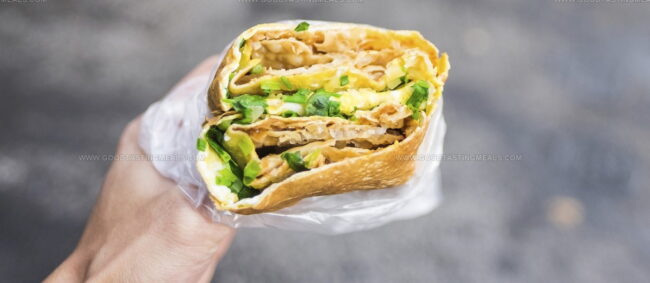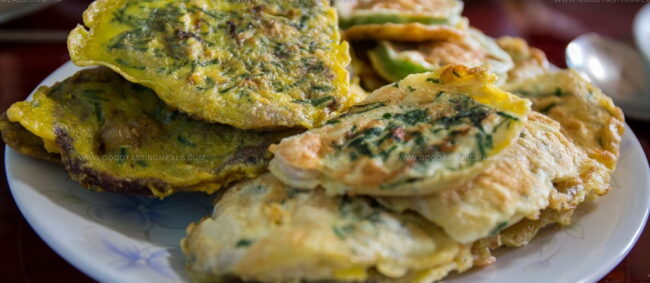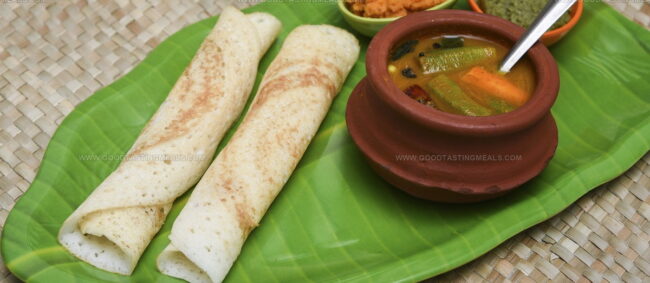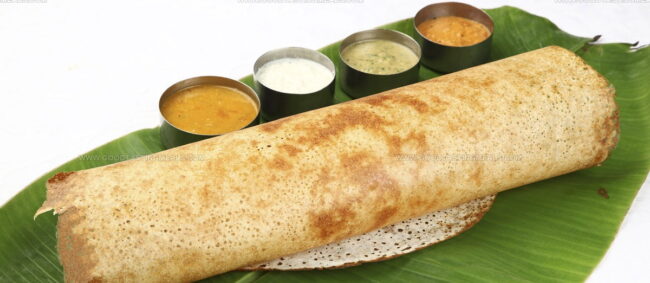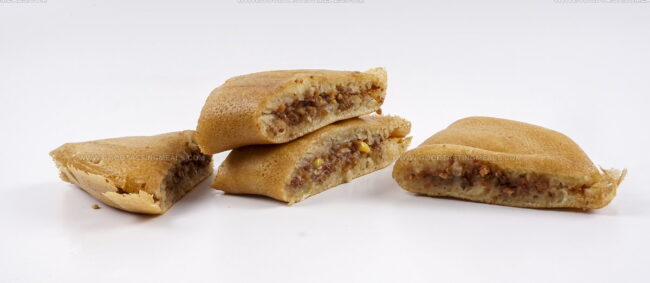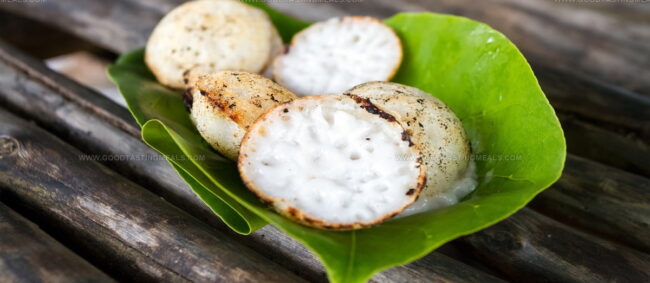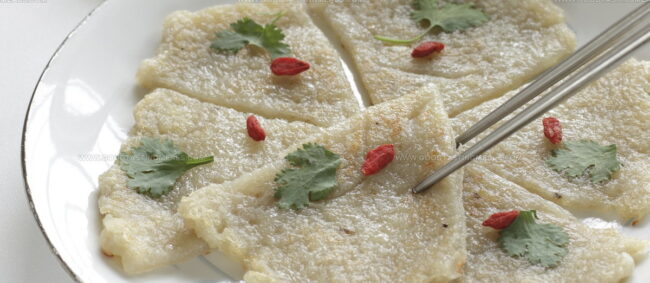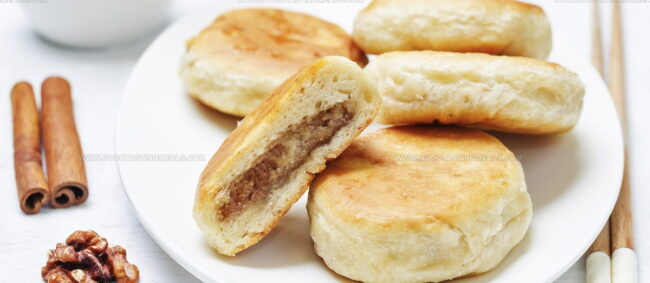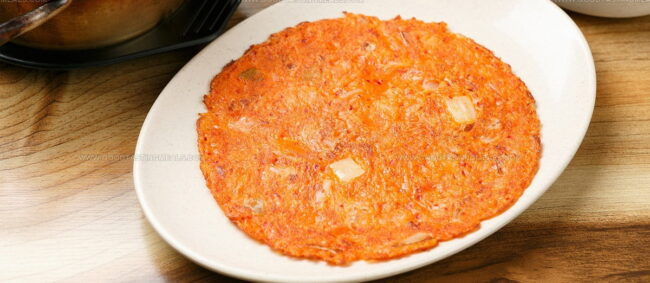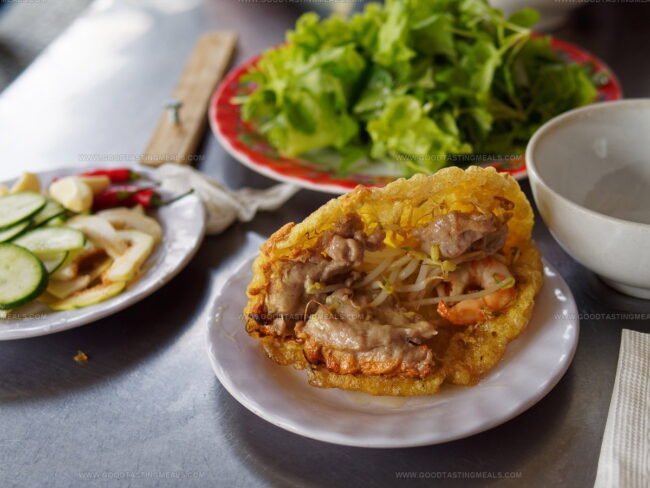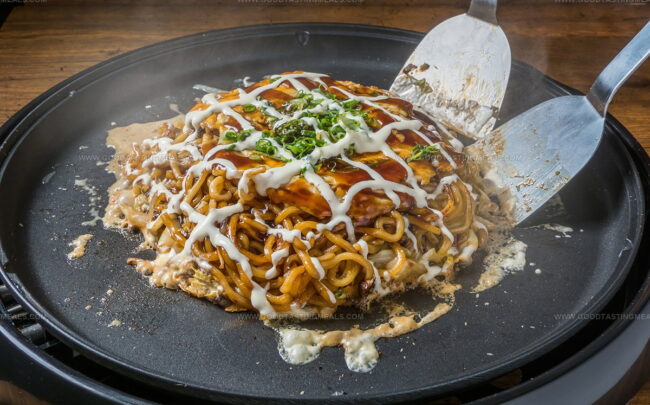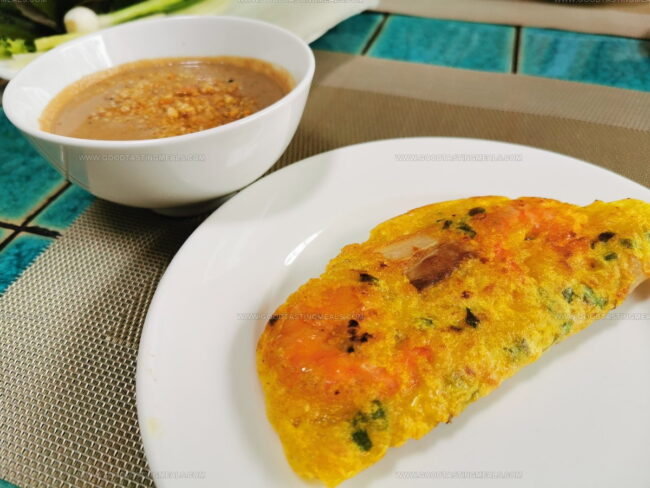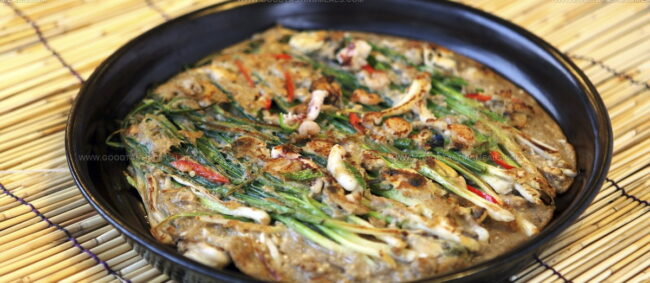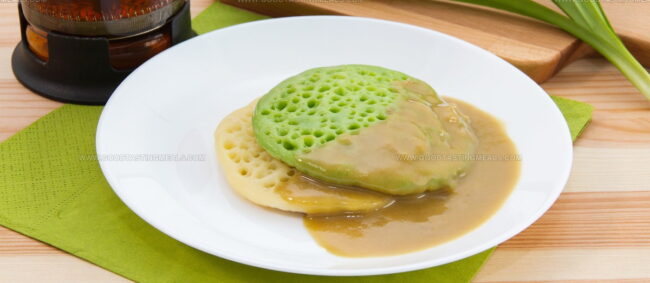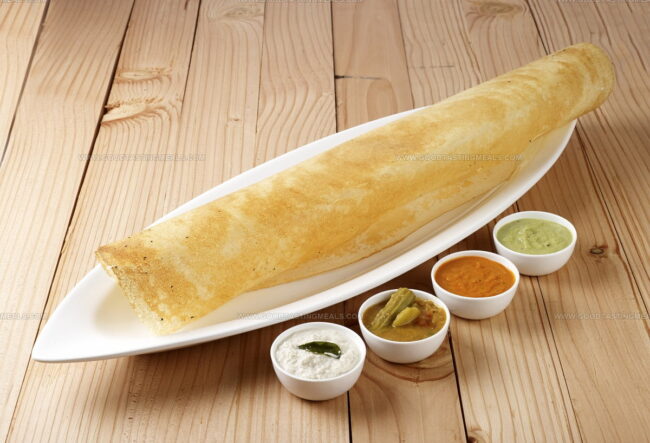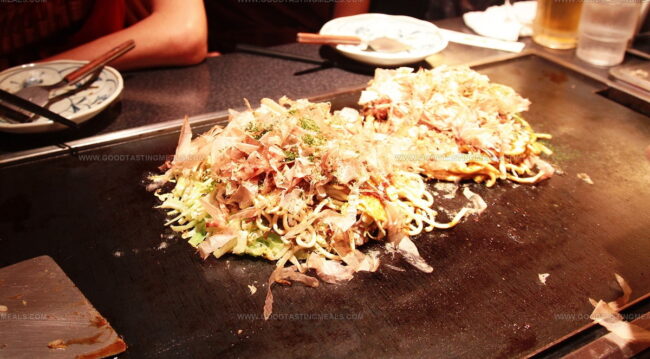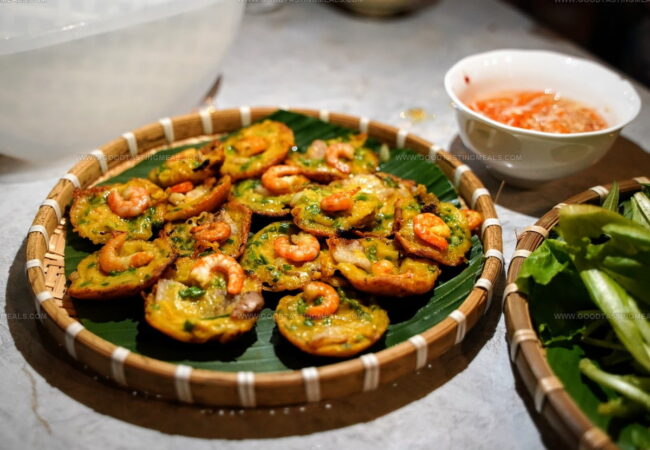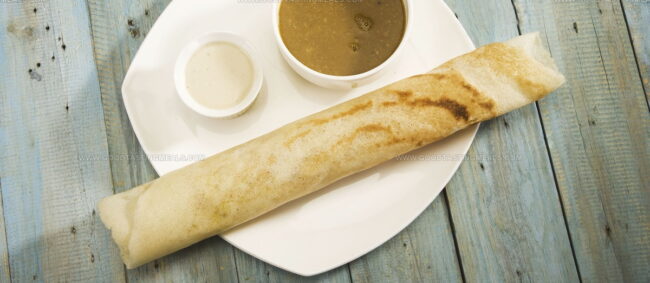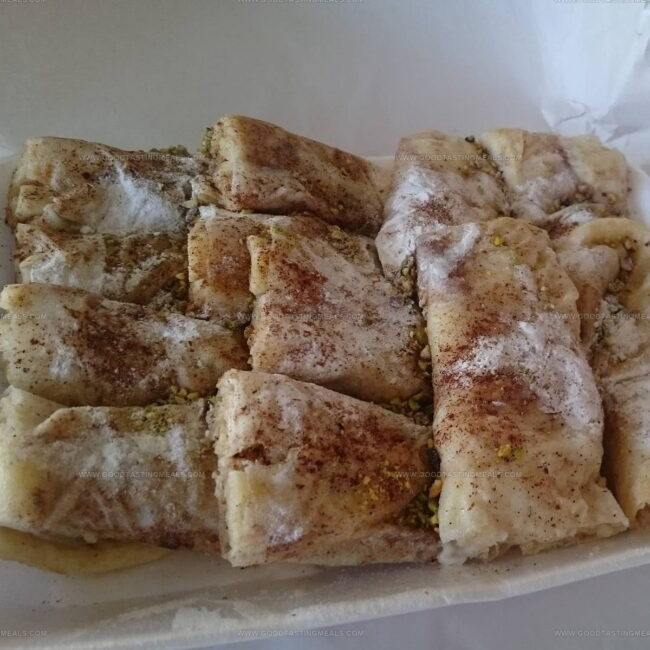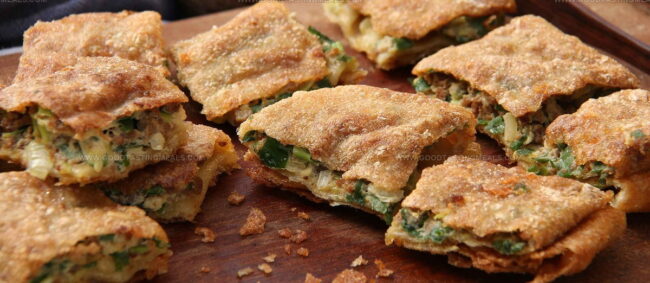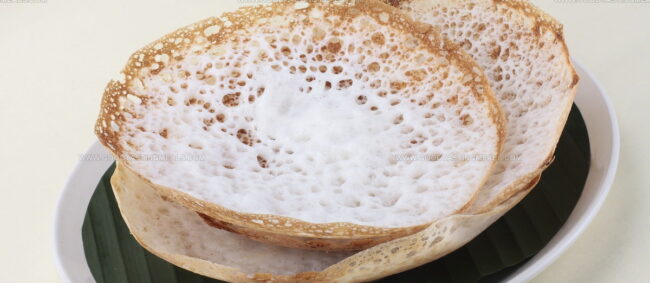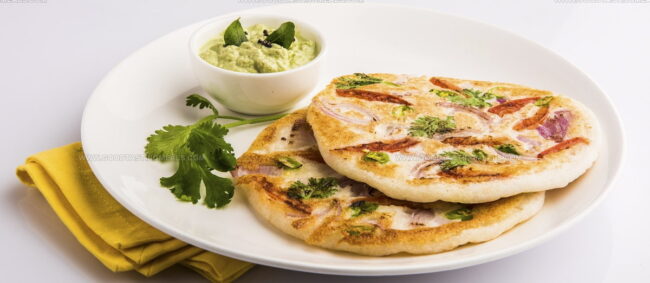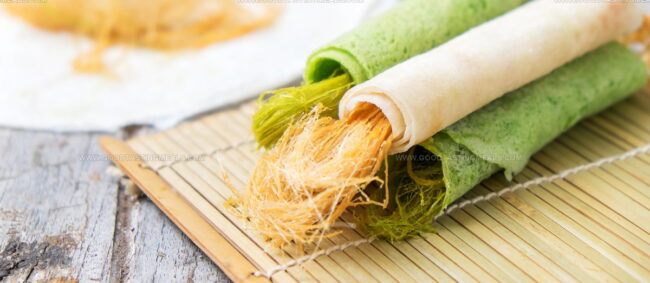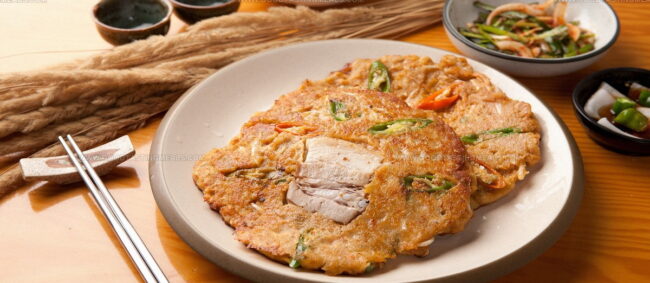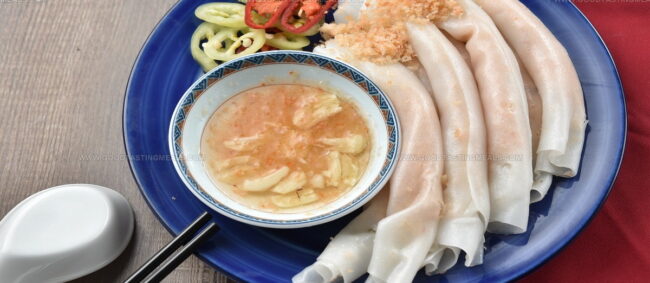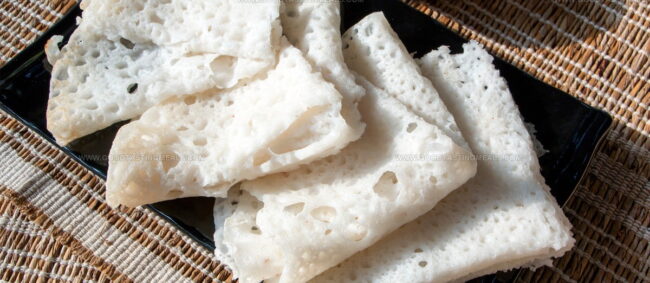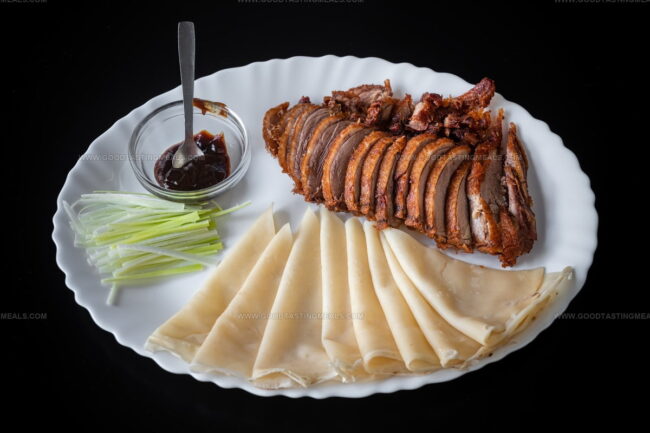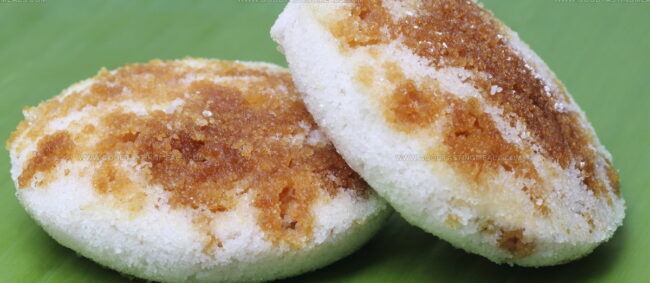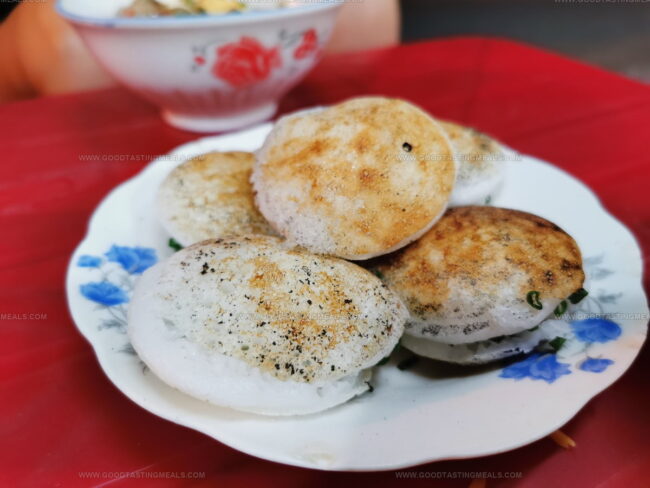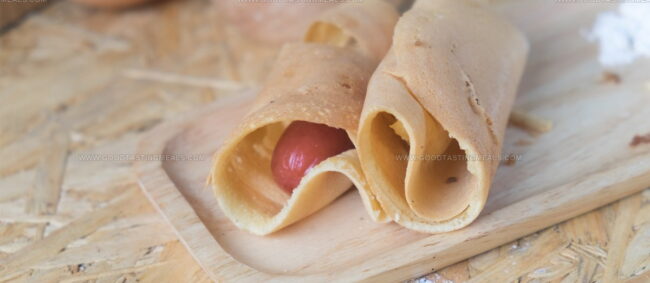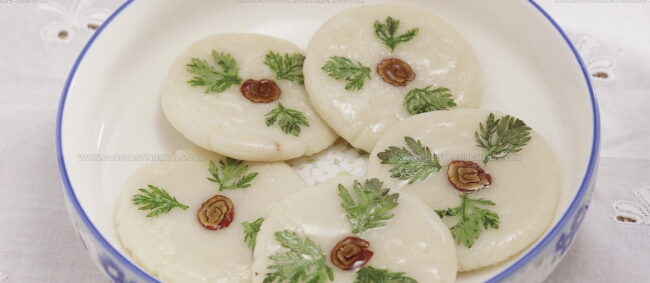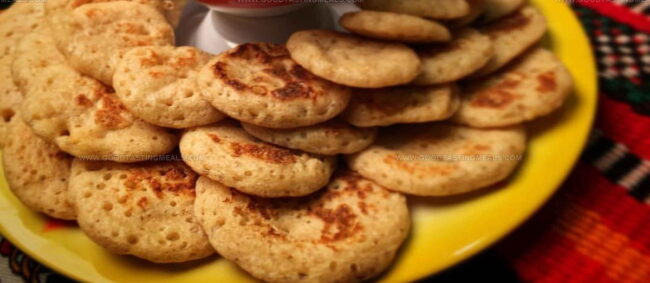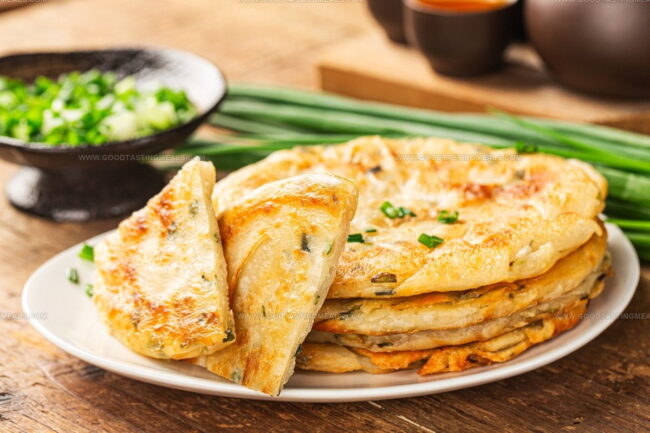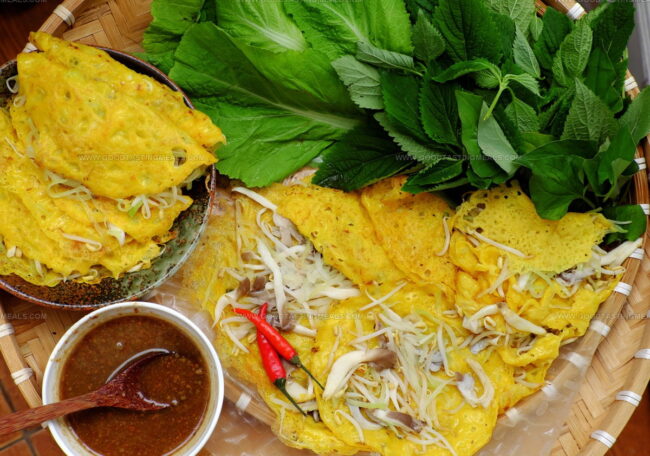45 Popular Asian Pancakes: A Tasty Journey Through Traditions
Asian pancakes represent a delightful culinary canvas where flour, eggs, and creativity blend into mouthwatering masterpieces.
These versatile delicacies span cultures with remarkable diversity and rich gastronomic traditions.
Crispy, soft, savory, or sweet, each pancake tells a unique story of regional ingredients and cooking techniques.
Cultural heritage flows through every carefully crafted bite, reflecting generations of culinary wisdom.
Skilled cooks transform simple ingredients into extraordinary dishes that tantalize taste buds and spark curiosity.
Regional variations showcase incredible ingenuity, transforming basic components into complex flavor profiles.
Whether street food or home-cooked comfort, these pancakes connect people through shared culinary experiences.
Prepare to journey through 45 remarkable Asian pancake variations that will inspire your next meal:
Asian Pancakes with Endless Flavor
Tables piled high with savory pancakes reveal the playful side of Asian cuisine. Fillings and sauces change from region to region, keeping things interesting.
Jianbing
Jianbing is a popular Chinese street breakfast crepe that transforms simple ingredients into a crispy, flavor-packed morning sensation.
Street vendors expertly spread thin batter across sizzling cast-iron griddles using wooden paddles, creating a delicate pancake base.
Mung bean, black bean, and wheat flour form the foundation of this versatile dish.
Cracked eggs quickly cook directly on the pancake's surface, adding rich texture and protein.
Savory sauces like chili, hoisin, and tianmianjiang provide complex flavor layers.
Traditional fillings include spring onions, mustard pickles, radishes, scallions, and cilantro.
Adventurous versions might incorporate Chinese sausage or chicken for extra substance.
Each jianbing offers a perfect handheld breakfast that balances crispy exterior with soft, flavorful interior.
Jeon
Jeon are crispy Korean pancakes bursting with versatile ingredients and deep cultural significance in Korean cuisine.
These savory or sweet flat cakes feature a golden-brown exterior achieved by coating various proteins and vegetables in flour and eggs before pan-frying.
Seafood, meat, and vegetable combinations create endless flavor possibilities for these traditional dishes.
Korean families prepare jeon during special celebrations like Lunar New Year and Korean Harvest Festival, though they enjoy them year-round.
Thin slices of protein and colorful vegetables get transformed into compact, crispy pancakes that complement main meals or serve as standalone snacks.
Each pancake represents a delicious canvas for culinary creativity and cultural expression.
Okonomiyaki
Okonomiyaki are savory Japanese pancakes packed with incredible flavor combinations and flexible ingredients.
Originating in the Kansai region, these versatile discs feature a batter made from eggs, flour, water, and grated yam mixed with shredded cabbage.
Seafood, meat, or vegetables can be added to customize the base mixture.
Chefs pan-fry the batter until golden and crispy on both sides.
Distinctive toppings like Japanese mayonnaise, bonito fish flakes, and thick Worcestershire-style sauce complete the dish.
Diners can choose their preferred protein and vegetable additions.
Restaurants across Japan celebrate this street food as a beloved comfort meal.
Dosa
Dosa is a crispy, golden-brown thin pancake crafted from fermented rice and black gram bean batter that originated in Tamil Nadu, India.
South Indian kitchens have perfected this ancient culinary treasure dating back to the 1st century AD.
Fenugreek seeds enhance the batter's flavor and create a distinctive golden hue during preparation.
Skilled cooks carefully spread the fermented mixture on a hot oiled griddle, achieving a delicate, paper-thin texture.
Restaurants across India serve this beloved dish as a breakfast staple and popular street food.
Dosa represents a perfect balance of texture, taste, and cultural heritage that continues to delight generations.
Masala Dosa
Masala dosa is a crispy South Indian crepe crafted from fermented rice and lentil batter, celebrated for its golden-brown texture and complex flavor profile.
Rice and lentils are ground into a smooth mixture, then left to ferment overnight, creating a tangy base for this iconic dish.
Potato masala serves as the traditional filling, generously spiced with mustard seeds, onions, and turmeric that add depth and warmth.
Coconut chutney and sambar typically accompany the dosa, enhancing its taste with complementary condiments.
Street vendors and restaurants across India serve this popular breakfast and snack item throughout the day.
Small restaurants and home kitchens take pride in their unique dosa-making techniques.
Fermentation gives the dosa its signature slight sourness and makes it easily digestible.
Apam Balik
Martabak manis are Indonesian sweet folded pancakes celebrated for their indulgent thickness and diverse fillings across Southeast Asian regions.
Chinese migrants from Fujian originally introduced this street food delicacy to Penang, spreading its popularity throughout Malaysia, Indonesia, Brunei, and Singapore.
Skilled vendors prepare these pancakes in two distinct styles: thin and crispy or thick and soft with a pillowy interior.
Traditional recipes feature ground peanuts, sugar, and butter as classic fillings, while modern interpretations include creative ingredients like chocolate chips, corn, raisins, grated cheese, and condensed milk.
Street food vendors carefully craft these pancakes on large griddles, creating a golden-brown exterior with a rich, sweet center.
Generations have enjoyed martabak manis as a beloved comfort food that reflects the dynamic culinary landscape of Southeast Asia.
Khanom Khrok
Khanom khrok are miniature Thai coconut pancakes bursting with complex flavor profiles that blend sweet and savory ingredients seamlessly.
Street vendors across Thailand skillfully prepare these bite-sized treats using special cast-iron pans with small round indentations.
Rice flour and coconut milk form the fundamental base of this traditional dessert's unique batter.
Crispy edges contrast beautifully with smooth, creamy centers that often incorporate surprising ingredients like scallions, taro, corn, or pumpkin.
Each tiny pancake offers a delicate balance between textural elements and subtle taste combinations.
Small iron pans help create their distinctive round shape and consistent cooking technique.
Vendors typically prepare khanom khrok in two stages, ensuring perfect texture and temperature.
Generations of Thai street food traditions have preserved this beloved snack's authentic preparation method.
Gamjajeon
Gamjajeon represents Korean potato pancakes bursting with rustic simplicity and crispy texture.
Korean home kitchens transform humble potatoes into golden-brown discs packed with savory flavor.
Grated potatoes form the core ingredient, often enhanced with chopped scallions, chives, carrots, or onions.
Small round pancakes sizzle in hot oil until edges turn perfectly crisp and brown.
Skilled cooks pan-fry these versatile treats to achieve maximum crunchiness and rich taste.
Choganjang sauce with soy sauce, vinegar, sugar, and water provides an ideal tangy complement.
Diners enjoy gamjajeon as a quick snack, light appetizer, or satisfying side dish.
Simple ingredients and quick preparation make this traditional Korean recipe a beloved comfort food.
Hotteok
Hotteok are warm Korean street pancakes bursting with sweet cinnamon, brown sugar, and nutty fillings that originated from Chinese merchant recipes in the late 19th century.
Korean food vendors transformed these original savory pancakes into delightful sweet treats after Chinese immigrants settled in Korea.
Street stands quickly popularized these crispy-outside, soft-inside pancakes during cold weather seasons.
Winter markets buzz with the aroma of freshly grilled hotteok, attracting locals and tourists.
Peanuts and walnuts often provide extra texture and richness to the gooey inner mixture.
Vendors carefully fold and seal the dough before grilling each pancake to golden perfection.
Korean street food culture embraces hotteok as a comforting winter snack that warms both hands and stomachs.
Kimchijeon
Kimchijeon are crispy, savory Korean pancakes packed with tangy, fermented kimchi that transform simple ingredients into a flavor-packed street food sensation.
Korean home kitchens have perfected this versatile dish by mixing chopped kimchi into a light flour batter seasoned with subtle spices.
Gochujang often adds extra heat and depth to the pancake's robust flavor profile.
Cooks typically pan-fry the mixture until golden brown and crispy on the edges.
Sesame seeds frequently garnish the surface for added texture and visual appeal.
Restaurants and street vendors serve kimchijeon as a quick snack, appetizer, or side dish.
Dipping sauces complement the pancake's rich, spicy notes.
Each bite delivers a satisfying crunch and complex kimchi flavor that captures Korean culinary creativity.
Dadar Gulung
Dadar gulung are Indonesian green pancake rolls bursting with sweet coconut filling and originating from Java's rich culinary traditions.
Green-tinted rice flour crepes derive their signature color from natural pandan leaf extract or modern food coloring.
Coconut filling gets sweetened with palm sugar and shredded to create a moist, rich interior.
Indonesians enjoy these lightweight desserts as popular street snacks and festive treats.
Delicate pancakes require careful rolling techniques to maintain their elegant cylindrical shape.
Pandan's distinct herbal fragrance provides an aromatic complexity to the dessert.
Vendors and home cooks prepare these treats using generations-old techniques.
Served chilled or at room temperature, dadar gulung offer a refreshing balance of textures and subtle sweetness.
Hue Pancake (Banh Khoai)
Banh khoai are crispy Vietnamese savory pancakes packed with rich flavors from central Vietnam's Hue region.
Rice flour forms the base of these thin, golden-brown delicacies that blend multiple textures and ingredients.
Skilled cooks prepare the batter using rice flour, water, eggs, sugar, and salt before carefully frying it in a hot pan.
Succulent toppings like sliced mushrooms, tender pork, fresh shrimp, crunchy bean sprouts, and Vietnamese sausage bits transform these pancakes into a complete meal.
Carrots and spring onions add extra depth and color to the dish.
Locals often enjoy banh khoai as a street food or casual dining option.
Restaurant patrons typically pair these pancakes with dipping sauces that complement their complex flavor profile.
Hiroshima-Style Okonomiyaki
Okonomiyaki are savory Japanese pancakes featuring a crispy batter base loaded with shredded cabbage and an array of toppings that create a complex flavor profile.
Osaka and Hiroshima regions offer distinct preparation styles with unique cooking techniques.
Hiroshima-style okonomiyaki distinguishes itself by layering ingredients separately instead of mixing them into the batter.
Thin pancake bases serve as foundations for multiple components like fried eggs, scallions, and sliced pork belly.
Dried bonito flakes typically garnish the top for added umami flavor.
Yakisoba or udon noodles often complement the pancake base underneath.
Restaurant diners frequently customize their okonomiyaki with personal ingredient selections.
Worcestershire-style sauce and mayonnaise traditionally complete this popular street food experience.
Crispy Vietnamese Pancake (Banh Xeo)
Banh xeo are crispy Vietnamese pancakes bursting with flavor and cultural richness.
Rice flour, turmeric, and coconut milk create the signature yellow batter that defines these savory crepes.
Scallions, bean sprouts, shrimp, and pork sizzle together inside the thin, crunchy exterior.
Skilled cooks carefully pan-fry the mixture at low temperatures, gently folding ingredients within the golden shell.
Diners tear the pancakes into large pieces, wrapping them in fresh lettuce or rice paper for a traditional eating experience.
Nuoc cham sauce, combining fish sauce, lime juice, sugar, chili peppers, and garlic, adds a tangy complement to each bite.
Vietnamese families often gather around these pancakes during social meals.
Monjayaki
Monjayaki are savory Japanese pancakes originating from Tokyo's street food culture, featuring a unique liquid-like batter that transforms into a crispy, flavorful meal right at the table.
Diners typically cook the runny mixture themselves on a hot griddle, creating an interactive dining experience that emerged after World War II when affordable ingredients were crucial.
Street vendors and small restaurants in the Kanto region popularized this affordable, quick meal that requires skillful spreading and scraping techniques.
Restaurants specializing in monjayaki often provide guests with small spatulas to manipulate the cooking batter.
Derived from funoyaki, an earlier Buddhist ceremony snack, monjayaki represents resourceful Japanese cooking traditions.
Ingredients can range from classic combinations like pork and seafood to more experimental options.
Pajeon
Pajeon is a crispy Korean pancake bursting with green onions and versatile ingredients that transforms simple flour and eggs into a savory street food sensation.
Korean home cooks craft these popular snacks by mixing rice flour, eggs, and chopped green onions into a smooth batter that creates a golden, thin pancake.
Seafood, vegetables, and kimchi frequently enhance the basic recipe, allowing endless flavor combinations.
Restaurants and street vendors often prepare pajeon as a single large pancake or smaller individual portions.
Green onions strategically protrude from the pancake's surface, creating a visually appealing texture.
Traditional dipping sauces featuring soy sauce and vinegar complement the pancake's crisp edges and tender center.
Pajeon pairs perfectly with steamed rice and provides a satisfying meal or appetizer.
Serabi
Serabi pancakes are traditional Indonesian griddle cakes crafted from rice flour and coconut, originating in Java's culinary landscape with distinctive regional variations.
Coconut milk creates their signature soft texture, while toppings range from classic sugar and crushed peanuts to modern innovations like chocolate sprinkles and sausages.
Authentic versions often feature kinca syrup made from coconut, strawberry, or durian, enhancing their complex taste.
Wheat flour sometimes substitutes rice flour, allowing flexible preparation methods.
Indonesians enjoy serabi as quick street food or casual snack, with each region developing unique preparation techniques.
Jackfruit, fermented oncom, and even ice cream provide creative additions to this beloved pancake style.
Kue Ape
Kue ape delivers a unique Indonesian street food experience with its crispy edges and soft, slightly sweet center.
Jakarta's signature pancake blends wheat flour, palm sugar, coconut milk, and yeast into a thin, round delicacy.
Originating from Indian appam influences, this snack features a distinctive white center and golden-brown perimeter.
Street vendors often prepare kue ape on specialized clay griddles to achieve its signature texture.
Traditional versions include sweet toppings like palm sugar syrup or condensed milk.
Indonesian families enjoy kue ape as a quick breakfast or afternoon snack.
Modern adaptations sometimes experiment with different flavor combinations to appeal to younger generations.
Paper Dosa
Paper dosa represents a crispy South Indian pancake stretching over a meter long with an incredibly thin, delicate texture.
Tamil Nadu culinary experts carefully blend basmati rice, urad dal, and fenugreek seeds into a smooth fermented batter.
Soaking ingredients overnight creates depth and complexity in flavor profiles.
Skilled makers spread the batter thinly across hot skillets, ensuring perfect golden-brown crispiness.
Ghee enhances the pancake's rich flavor and prevents sticking during cooking.
Salt adds essential seasoning to balance the fermented taste.
Serving the massive paper dosa becomes a spectacle of culinary artistry that delights diners with its impressive size and crisp texture.
Osaka-Style Okonomiyaki
Okonomiyaki are savory Japanese pancakes blending crispy batter with shredded cabbage and an array of delicious ingredients.
Originating in the Kansai region, these versatile discs feature a mix of flour, eggs, and dashi that create a unique texture and flavor profile.
Osaka and Hiroshima regions boast distinctive preparation styles, with the Osaka method mixing ingredients directly into the batter before grilling.
Toppings typically include thin pork slices, green onions, and bonito flakes that add depth and complexity to the dish.
Chefs often customize okonomiyaki with seafood, vegetables, or meat according to personal preference.
Diners frequently enjoy watching the pancake cook on a sizzling griddle, creating an interactive dining experience.
Mayonnaise and sweet-savory okonomiyaki sauce drizzled on top complete the mouthwatering presentation.
Vietnamese Mini Savory Pancakes (Banh Khot)
Banh khot are miniature crispy rice pancakes originating from southern Vietnam that showcase a delicate blend of textures and flavors.
Seafood like shrimp or squid typically crowns these small round pancakes, which are cooked in special cast-iron or clay molds over high heat.
Rice flour creates a light, crispy exterior while maintaining a soft interior that melts in you mouth.
Vendors often serve banh khot with fresh herbs, lettuce leaves, and a tangy dipping sauce made from fish sauce, lime, and chili.
Southern Vietnamese regions like Vung Tau are famous for perfecting this street food delicacy.
Coastal communities traditionally prepare these pancakes using fresh local seafood caught that morning.
Restaurants and street stalls throughout Vietnam serve banh khot as a popular breakfast or light meal option.
Family gatherings frequently feature these bite-sized pancakes as a communal dining experience.
Pesara Dosa
Pesara dosa emerges as India's celebrated thin pancake crafted from fermented mung bean batter, creating an ultra-crispy flatbread with complex flavor profiles.
Originating in Andhra and Rajasthan, this paper-thin griddlecake requires eight to ten hours of fermentation to develop its signature bubbly texture.
Mung beans form the primary ingredient, transforming into a light, nutritious breakfast staple across Indian regions.
Skilled cooks often enhance the base recipe with aromatic additions like ginger, cumin seeds, green chiles, and chopped onions.
Crisp edges and golden-brown surfaces distinguish an expertly made pesara dosa from ordinary pancakes.
Nutritional benefits include high protein content and easy digestibility.
Zlebiye
Zlebiye is a crispy Syrian breakfast pastry featuring paper-thin dough deep-fried to golden perfection and generously stuffed with ashta, a rich Levantine clotted cream.
Syrian bakers carefully roll delicate dough into thin sheets before quickly frying them to achieve a light, crunchy texture.
Powdered sugar and ground cinnamon cascade over the warm pastry, creating a sweet and aromatic treat.
Families across Syria start their mornings with this indulgent dessert that balances crisp exterior and creamy interior.
Restaurants and bakeries throughout Syria showcase this beloved morning delicacy.
Diners enjoy the contrast between the crisp fried dough and smooth ashta filling.
Martabak
Martabak are crispy, golden-brown stuffed flatbreads originating from Yemen and Saudi Arabia with roots in Arabic and Indian culinary traditions.
Skilled street vendors craft these thin pancakes by expertly folding stretchy dough around savory fillings like ground meat, eggs, garlic, onions, and peppers.
Ghee and fragrant curry spices enhance the dish's rich flavor profile, while fresh herbs such as coriander and mint add bright, aromatic notes.
Rectangular in shape, martabak develop a perfect golden exterior during frying, creating a satisfying crunch with each bite.
Arabic traders and immigrant populations helped spread this popular street food across the Middle East, India, and Persia.
Mutabbaq, meaning "folded" in Arabic, describes the intricate preparation technique used to create these delicious parcels.
Appam
Appams are signature South Indian rice pancakes with a distinctive bowl-like shape crafted from fermented rice and coconut milk batter.
Syrian Christians in Kerala pioneered this traditional breakfast and dinner staple that originated in southern India's coastal regions.
Jewish culinary influences potentially contributed to its early development, though historical details remain sparse.
Street vendors across Sri Lanka and India frequently sell these delicate pancakes in small batches of three to eight per serving.
Coconut milk provides a rich, creamy texture that distinguishes appams from standard flatbreads.
Fermentation creates a light, airy consistency that makes these pancakes uniquely appealing.
Uttapam
Uttapam is a savory South Indian pancake made from fermented rice and lentil batter, generously topped with colorful chopped vegetables like onions, tomatoes, carrots, and chiles.
Street vendors and home cooks across southern India craft this popular breakfast and snack item with a crispy exterior and soft, fluffy center.
Cooking the batter on a hot griddle creates a golden-brown base that perfectly holds the fresh vegetable toppings.
Mini versions typically come in four-piece servings with varied ingredient combinations.
Restaurants and families serve uttapam with coconut chutney and sambar for a complete meal experience.
Vegetarian diners especially enjoy this nutritious and flavorful dish.
Spicy and tangy flavors make uttapam a beloved comfort food throughout southern India.
Roti Jala
Roti jala are golden Malaysian net-like crepes woven with flour, eggs, milk, and turmeric through a special squeeze bottle technique mimicking traditional fishing nets.
Malaysian families traditionally serve these delicate lacy pancakes during celebrations like weddings and birthdays.
Warm roti jala perfectly complement spicy potato and chicken curries, creating a harmonious flavor combination.
Street vendors and home cooks often prepare these crepes using a distinctive pouring method that creates intricate web-like patterns.
Turmeric gives the crepes their signature yellow color and subtle earthy flavor.
The snack originated from Malaysian culinary traditions blending local ingredients and creative cooking techniques.
Soft and slightly crispy, roti jala can be enjoyed as a standalone snack or paired with tea.
Malaysians consider these crepes a beloved comfort food that connects generations through shared meals.
Roti Sai Mai
Roti sai mai are delicate Thai street treats combining vibrant green pandan pancakes with wispy, sugary cotton candy.
Muslim communities in Ayutthaya first created this unique snack featuring paper-thin, pan-fried roti wrapped around cloud-like spun sugar.
Pandan leaves give the pancake its signature emerald hue and subtle fragrant essence.
Skilled vendors skillfully roll the gossamer-like cotton candy inside the warm, flexible roti.
Each bite delivers a surprising contrast between the soft, herbal pancake and sweet, melt-in-your-mouth sugar strands.
Generations have enjoyed this playful street food that balances texture and flavor.
Roti sai mai remain a beloved Thai culinary tradition that continues to delight taste buds.
Bindaetteok
Bindaetteok represents a traditional Korean savory pancake crafted from ground mung beans and packed with rich culinary history dating back to the 1670s.
Wealthy Koreans originally enjoyed this dish topped with succulent pork chunks while lower social classes consumed plainer versions.
Modern bindaetteok incorporates diverse ingredients like cabbage kimchi, sprouts, onions, glutinous rice, and ground pork for complex flavor profiles.
Shallow-fried to achieve a crispy exterior, the pancake delivers maximum texture and taste when served fresh and hot.
Korean street food vendors and home cooks frequently prepare this versatile dish as a popular snack or light meal.
Mung beans form the primary ingredient, providing a hearty base for the pancake's unique texture and nutty undertones.
Bindaetteok remains a beloved comfort food that connects generations through its simple yet satisfying preparation.
Steamed Wet Pancakes (Banh Uot)
Banh uot are delicate Vietnamese rice flour pancakes boasting an ultrathin, almost transparent texture that distinguishes them from other regional flatbreads.
Originating in northern Vietnam, these silky sheets showcase exceptional culinary craftsmanship through their intricate steaming process using specialized bamboo mats.
Crafted from a simple blend of rice flour and tapioca starch, the pancakes emerge gossamer-light and incredibly smooth after careful steaming.
Skilled vendors typically roll these translucent pancakes around savory fillings like cha lua sausage or seasoned pork.
Street food vendors often garnish banh uot with crispy fried shallots for added texture and depth.
Nuoc cham, a tangy Vietnamese dipping sauce, provides a zesty complement to the mild pancake's flavor profile.
Banh uot serve as a beloved breakfast or light meal, reflecting the country's rich street food culture.
Neer Dosa
Neer dosa are thin, delicate rice flour pancakes originating from Karnataka, India, characterized by their translucent, lacy texture and quick preparation method.
Crafted from a simple mixture of rice flour, water, and salt, these crepes differ from traditional dosas by using an unfermented, runny batter that creates incredibly light and soft results.
Skilled cooks spread the thin batter across a hot greased griddle, allowing it to cook quickly and develop a gossamer-like appearance.
Coconut variations enhance the basic recipe, with some versions incorporating freshly grated coconut or coconut milk for added richness.
Karnataka's coastal regions particularly celebrate this breakfast staple, which gets its name from the Tulu word "neer" meaning water.
Malpua
Malpua are traditional Indian sweet pancakes deep-fried to golden perfection using a batter of rice flour, thickened milk, and cardamom.
Religious festivals like Ramadan and Holi prominently feature these crispy treats during winter celebrations.
Sugar syrup immersion transforms the pancakes into a decadent dessert after frying.
Historical recipes originally used barley flour instead of contemporary ingredients.
Modern variations incorporate fruits like mangoes, pineapples, and bananas into the basic recipe.
Regional differences across India create unique flavor profiles for these small pancakes.
Crispy edges and soft centers make malpuas a beloved street food and homemade delicacy.
Family gatherings often include these sweet pancakes as a special treat that connects generations through shared culinary traditions.
Rava Dosa
Rava dosa represents a crispy, lacy South Indian pancake crafted from semolina batter that delivers a distinctive netted texture unlike traditional dosa varieties.
Originating in South India, this quick-to-prepare pancake offers versatile fillings that change across different regional cuisines.
Semolina provides the signature crunch and light golden appearance that distinguishes rava dosa from other pancake styles.
Coriander, cumin, and other spices often enhance the batter's flavor profile.
Potatoes, onions, and green chilies commonly serve as popular filling ingredients.
Restaurants typically pair rava dosa with coconut chutney and sambar for a complete meal experience.
Street vendors and small eateries consider this dish a staple in South Indian culinary traditions.
Mandarin Pancakes (Bo Bing)
Mandarin pancakes are thin, delicate wrappers essential to Peking duck cuisine in China.
Chinese bakers create these versatile pancakes using simple flour, water, and vegetable oil ingredients.
Skilled hands knead soft dough into smooth, elastic textures through precise mixing techniques.
Small dough balls transform into paper-thin circles after careful rolling and gentle pressing.
Traditional frying methods produce golden-brown pancakes with slightly crispy edges and tender centers.
Diners love wrapping succulent duck meat and crispy skin inside these light, flexible pancakes.
Each pancake serves as a perfect vehicle for enjoying complex flavor combinations in one delightful bite.
Laklak
Laklak is a beloved Balinese pancake distinguished by its vibrant green hue derived from pandan leaves and crafted from rice flour.
Skillfully prepared in unique half-sphere molds over an open fire, these pancakes develop a delightfully fluffy interior with a crisp outer layer.
Balinese communities traditionally serve laklak with a sweet drizzle of coconut or palm sugar syrup, which perfectly complements the pancake's subtle flavor profile.
Grated coconut sprinkled generously on top adds textural contrast and enhances the overall taste experience.
Rice flour serves as the primary ingredient, creating a soft and smooth base for this iconic Balinese treat.
Pandan leaves not only provide the signature green color but also contribute a fragrant, slightly nutty essence to the pancake.
Small in size but rich in cultural significance, laklak represents a cherished culinary tradition in Bali.
Kallappam
Kallapam represents a traditional Sri Lankan and Keralan coconut pancake celebrated for its unique fermentation process and complex flavor profile.
Bakers prepare this special dish using a blend of raw and cooked rice mixed with fresh coconut milk and grated coconut.
Yeast or traditional toddy (fermented palm wine) helps create its distinctive rise and tangy undertone.
Shallots, sugar, salt, and cumin seeds contribute additional depth to the pancake's rich taste.
Authentic preparation involves careful mixing and fermenting of ingredients to develop a soft, slightly sour texture.
Coconut's prominent role gives this pancake its distinctive Sri Lankan and Keralan culinary character.
Pitha
Pithas are traditional rice-based delicacies spanning sweet and savory variations across Bangladesh and India, typically crafted from rice flour with versatile fillings ranging from jaggery and coconut to complex combinations of cheese, lentils, and vegetables.
Regional cooks prepare these small cookies or dumplings in numerous styles, often reserved for significant celebrations like weddings and harvest festivals such as Nabanna and Poush Parban.
Wheat and corn flour occasionally substitute rice flour, expanding the potential recipe options.
Savory versions might include spiced vegetable fillings, while sweet iterations frequently feature coconut and jaggery.
Some pithas emerge as intricate dumplings with layered ingredients.
Seasonal preparations highlight regional ingredients and cultural traditions.
Family gatherings become especially meaningful when these classic treats appear on the menu, connecting generations through shared culinary experiences.
Vietnamese Mini Pancakes (Banh Can)
Banh can are distinctive Vietnamese pancakes crafted from a delicate rice flour batter, traditionally grilled in specialized terracotta molds across South Central Vietnam.
Street vendors and home cooks carefully pour the thin mixture into these unique molds, topping each pancake with succulent shrimp, scallions, optional pork, or quail eggs.
Regional chefs from Ninh Thuan province originally developed these crispy treats, which quickly spread throughout neighboring areas.
Diners typically wrap the golden pancakes in fresh herbs and leafy vegetables, creating a vibrant handheld meal.
Each pancake offers a perfect balance of crisp exterior and tender interior, making them a popular street food.
Accompanying fish sauce adds a tangy depth to the pancake's flavor profile.
Served hot and fresh, banh can provide a quick, satisfying bite that captures traditional Vietnamese culinary techniques.
The pancakes represent a simple yet sophisticated approach to street food that continues to delight locals and travelers.
Khanom Tokyo
Tokyo Pancakes are mouthwatering Thai street food crepes filled with an exciting mix of sweet and savory ingredients.
Crafted from leavened egg batter, these small pancakes roll up quickly at bustling street stalls across Thailand.
Vendors expertly prepare them with diverse fillings like creamy custards, ground pork, or sausage pieces.
Maggi seasoning sauce and powdered white pepper often enhance the flavor profile.
Thephiset, a special version, features a larger crepe packed with crumbled sausage and beaten eggs.
Street food enthusiasts enjoy these portable, flavor-packed treats that showcase Thailand's creative culinary spirit.
Crispy edges and soft centers make these pancakes a popular quick meal or snack.
Hwajeon
Hwajeon are delicate South Korean rice flour pancakes adorned with stunning edible flowers that showcase centuries-old culinary craftsmanship.
Korean women historically prepared these sweet treats during springtime festivals as elegant desserts featuring seasonal blossoms like azaleas, rose petals, and chrysanthemums.
Spring picnics called Hwajeon Nori transformed these pancakes into celebratory cultural experiences dating back to the Koryo Dynasty.
Soft and slightly sweet, these small pancakes blend traditional rice flour with gentle floral accents.
Gentle cooking techniques involve carefully pressing fresh flowers onto thin, round dough before briefly pan-frying.
Artisan bakers meticulously select seasonal flowers to create visually beautiful and tasty treats.
Rice flour pancakes serve as a delicate canvas for nature's most beautiful spring blooms.
Min Chiang Kueh
Min chiang kueh represents a beloved street pancake originating from Southern China and Singapore with crispy edges and soft interior.
Thick flour-based batter creates a unique texture when combined with traditional fillings like crushed peanuts and sugar.
Singaporean and Malaysian street vendors prepare this breakfast treat using plain and rice flour, coconut milk, eggs, and yeast.
Hawker centers across Southeast Asia serve these hot pancakes fresh from griddles.
Street food enthusiasts enjoy multiple filling variations including red bean paste and shredded coconut.
Each pancake is carefully folded in half after cooking to seal in warm ingredients.
Regional recipes slightly differ but maintain core preparation techniques.
Sweet and nutty flavors define this classic breakfast staple enjoyed by many generations.
Masabeeb
Masabeeb are small, round wheat pancakes originating from Arabian cuisine that deliver a crispy exterior and soft interior.
Gulf region families traditionally prepare these pancakes as a beloved breakfast or sweet dessert option.
Whole wheat and white flour form the base of its simple ingredients, which also include eggs, yeast, milk, and warm water.
Cooking happens on a hot griddle or pan until each pancake turns golden brown and develops a slightly crisp texture.
Ghee or honey typically accompanies these pancakes, enhancing their rich flavor profile.
Locals often serve masabeeb alongside Arabic coffee or tea for a complete morning meal.
Masabeeb represent a classic comfort food deeply rooted in Arabian culinary traditions.
Tamari Kaak
Tamari kaak are beloved Syrian street snacks featuring thin pancake-like breads filled with sweet, nutty ingredients.
Damascus neighborhoods celebrate this traditional sandwich as a cultural culinary gem combining simple yet delicious components.
Wheat flour, sugar, and water create the soft base pancake, which bakers carefully craft into thin rounds.
Tahini provides a rich, creamy foundation for the filling, complemented by grape or date molasses for natural sweetness.
Banana slices add smooth texture and fruity flavor to the mix.
Toasted sesame seeds sprinkled on top contribute a delightful crunch and earthy undertone.
Powdered sugar dusts the exterior, creating a final layer of sweetness that enhances the entire experience.
Street vendors and home cooks prepare these treats, ensuring this classic Syrian snack remains a beloved cultural staple.
Riha Folhi
Riha folhi are savory Maldivian crepes bursting with complex spiced tuna flavors from traditional island cuisine.
Cooks create thin crepe batter using flour, water, salt, and turmeric for a vibrant yellow color.
Smoked tuna serves as the primary filling, blended with aromatic spices like curry powder, chili, cinnamon, cardamom, and fresh garlic.
Coconut milk adds richness and depth to the simmered mixture.
Pandan leaves contribute a subtle herbal essence to the filling.
Onions provide sweet undertones and textural contrast within the crepe.
Lemon juice brightens the overall flavor profile with its tangy notes.
Skilled hands carefully fold and cook these crepes to golden perfection, creating a beloved street food and home-style comfort dish.
Thong Muan Sot
Thong muan sot represents a silky Thai dessert from Kanchanaburi province with a delicate, soft pancake-like texture different from its crispy traditional version.
Rice flour, coconut milk, sugar, and eggs form the primary ingredients creating its signature smooth consistency.
Skilled cooks spread the thin batter carefully onto specialized pans, cooking it gently until perfectly set.
Gentle rolling transforms the soft pancake into elegant cylindrical shapes.
Coconut milk provides rich undertones enhancing the dessert's natural sweetness.
Regional techniques passed through generations contribute to its authentic preparation.
What Are the Must-Have Dipping Sauces That Enhance the Taste of Asian Pancakes?
Asian pancakes come alive when paired with the right dipping sauces, which add layers of flavor and balance. Here are essential sauces that elevate these delicious dishes:
How Do Regional Ingredients Shape the Unique Styles of Asian Pancakes?
The diversity of Asian pancakes is deeply rooted in the use of local ingredients, which influence their texture, flavor, and presentation:

